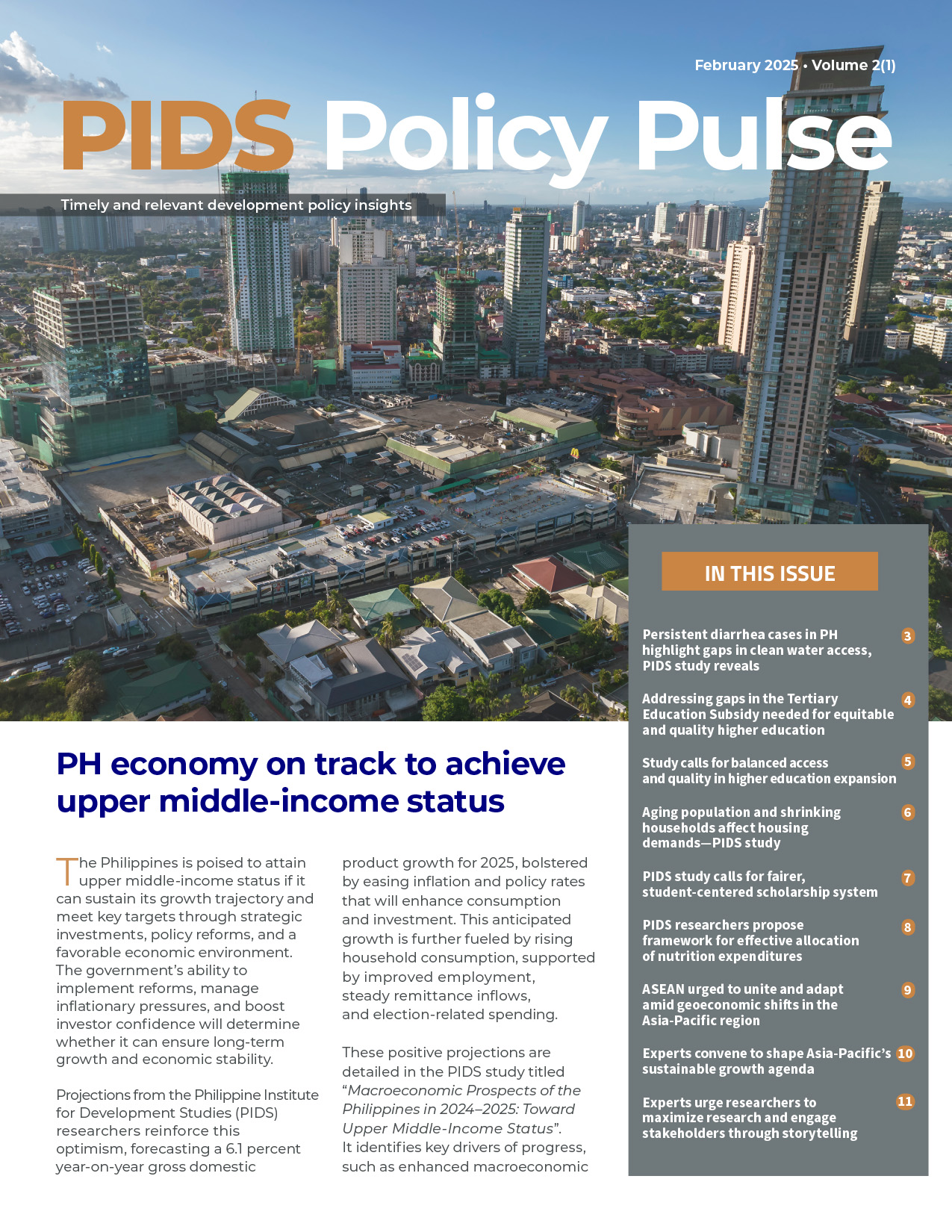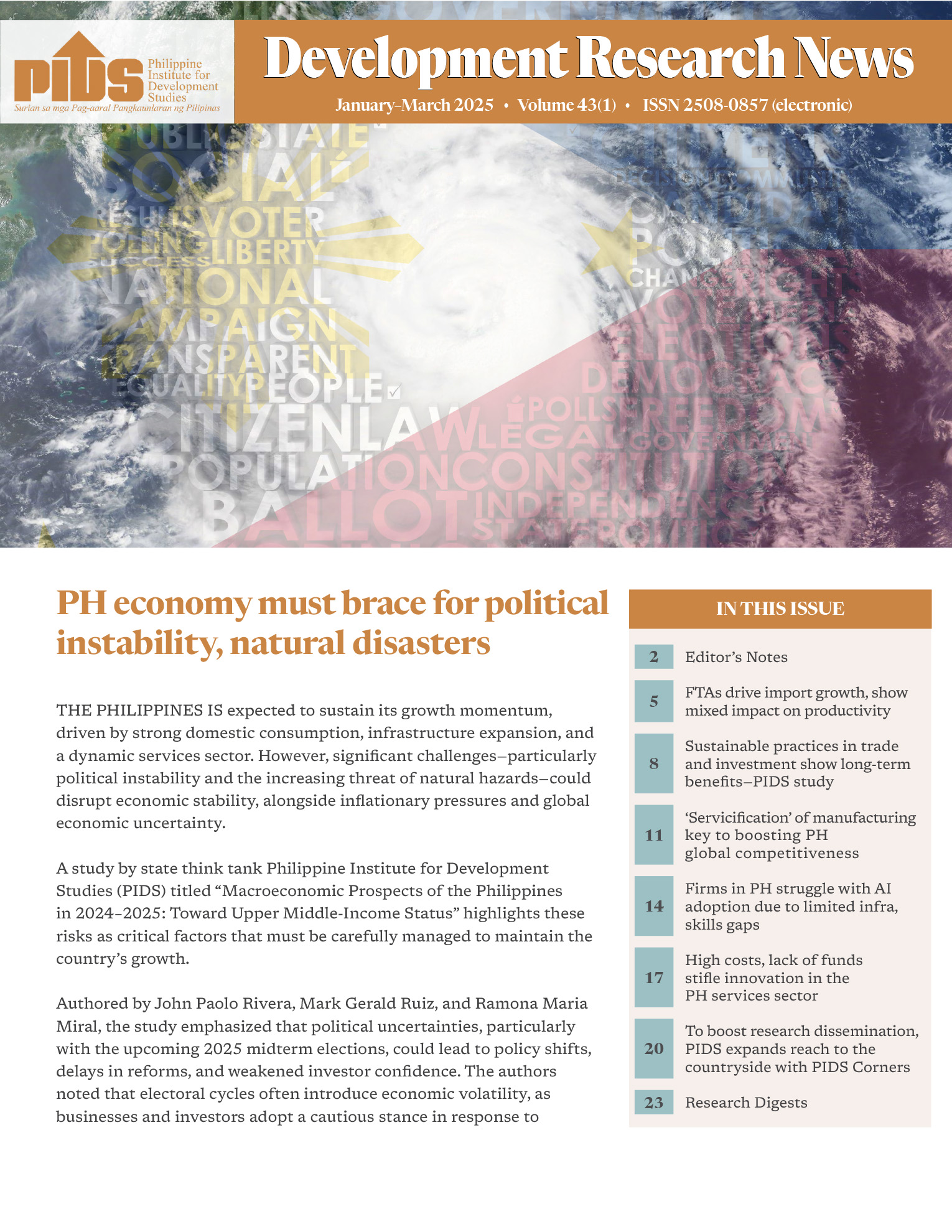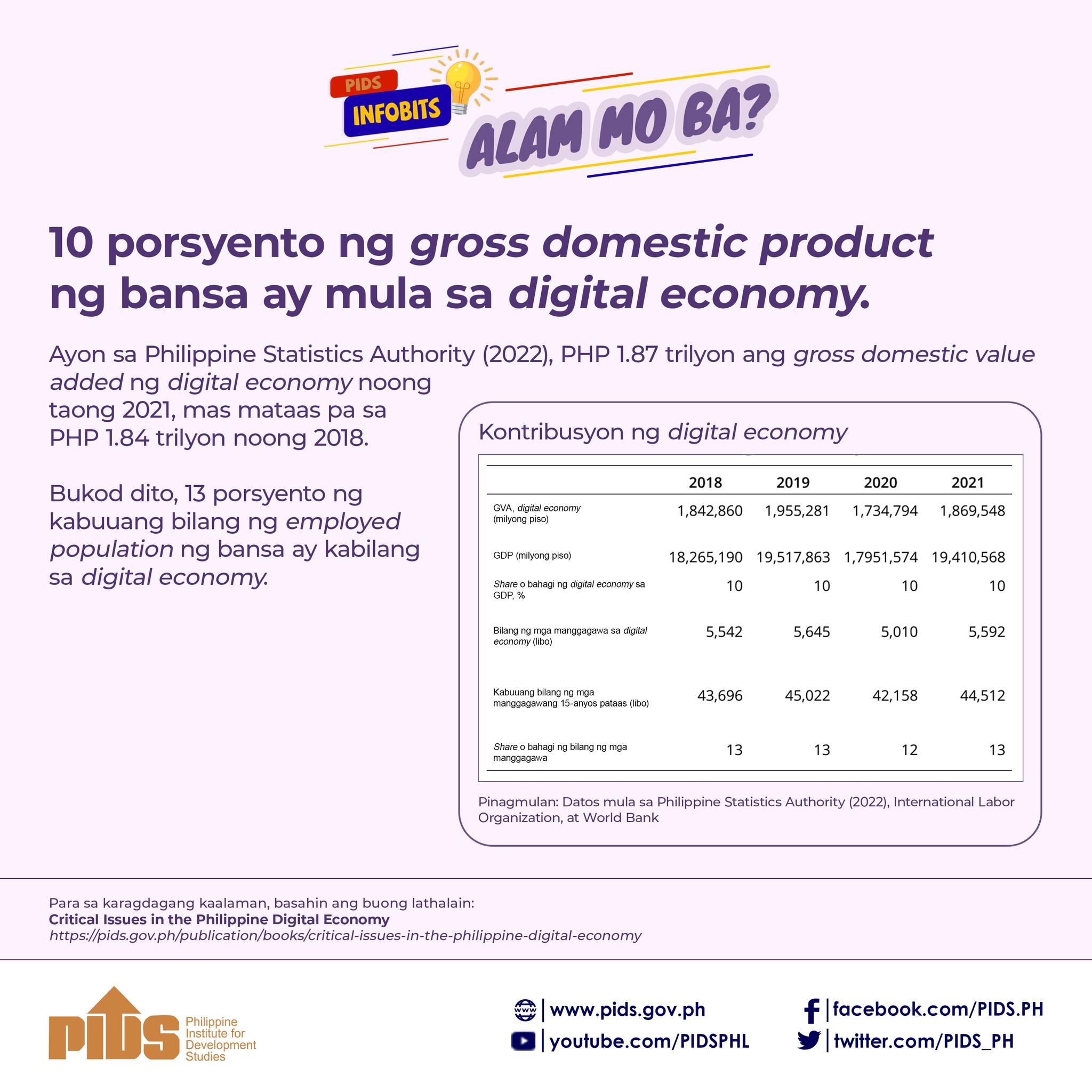State-run think tank Philippine Institute for Development Studies (PIDS) said that domestic consumption is seen as key driver for growth in the local economy this year amid shaky global growth projections.
The PIDS analysis was featured in the recently-released study, “Macroeconomic Outlook of the Philippines in 2023-2024: Prospects and Perils,” authored by PIDS Research Fellow Margarita Debuque-Gonzales, and research analysts Mark Gerald Ruiz and Ramona Maria Miral.
“A key driver of growth in 2024 is expected to be domestic consumption, supported by a steady flow of remittances from overseas Filipinos, rising wages that partially offset declining purchasing power, and an improving job market with an increasing number of wage and salary earners,” said the authors.
“This robust domestic demand is projected to act as a buffer against the impact of a weaker global outlook,” they added.
PIDS said that gross domestic product (GDP) growth is expected to remain slow in 2024 at a macroeconomic scale, with the US, Japan, and European countries’ growth weakening in the next few years. In contrast, China is seen to have fast growth, but hampered by domestic challenges.
Despite this, PIDS economists forecast that Philippines is expected to grow by 5.5 percent to six percent in 2024. For the first three quarters of 2023, the economy grew by 5.5 percent.
Inflation in advanced economies is expected to decline to four to 4.5 percent in 2024 from seven percent in 2023 in the medium-term. For emerging markets and developing economies (EMDEs), inflation will be from five to 8.5 percent, except in developing Asia which is pegged to be below three percent.
Inflation in 2024 is forecast to fall between one percent to three percent within the central bank’s target range coming from the projected average inflation of six percent in 2023. This is attributed to easing pressure on commodities and base effects.
However, the authors said the independence of the Bangko Sentral ng Pilipinas on controlling inflation must be maintained to support positive growth. Other actions that can be undertaken include managing exchange rate volatility, rebuilding fiscal space, and investing in infrastructure and human capital.
This is where effective policies must be crafted to support these economic policies and initiatives this year, they added.
Notably, the authors highlighted the implementation of the Maharlika Investment Fund (MIF), equipped with a credible board and management team, as a crucial aspect that can sway growth.
“While it holds potential for boosting economic growth and development, its success hinges on strong governance and clear objectives,” they said.
State-run think tank Philippine Institute for Development Studies (PIDS) said that domestic consumption is seen as key driver for growth in the local economy this year amid shaky global growth projections.
The PIDS analysis was featured in the recently-released study, “Macroeconomic Outlook of the Philippines in 2023-2024: Prospects and Perils,” authored by PIDS Research Fellow Margarita Debuque-Gonzales, and research analysts Mark Gerald Ruiz and Ramona Maria Miral.
“A key driver of growth in 2024 is expected to be domestic consumption, supported by a steady flow of remittances from overseas Filipinos, rising wages that partially offset declining purchasing power, and an improving job market with an increasing number of wage and salary earners,” said the authors.
“This robust domestic demand is projected to act as a buffer against the impact of a weaker global outlook,” they added.
PIDS said that gross domestic product (GDP) growth is expected to remain slow in 2024 at a macroeconomic scale, with the US, Japan, and European countries’ growth weakening in the next few years. In contrast, China is seen to have fast growth, but hampered by domestic challenges.
Despite this, PIDS economists forecast that Philippines is expected to grow by 5.5 percent to six percent in 2024. For the first three quarters of 2023, the economy grew by 5.5 percent.
Inflation in advanced economies is expected to decline to four to 4.5 percent in 2024 from seven percent in 2023 in the medium-term. For emerging markets and developing economies (EMDEs), inflation will be from five to 8.5 percent, except in developing Asia which is pegged to be below three percent.
Inflation in 2024 is forecast to fall between one percent to three percent within the central bank’s target range coming from the projected average inflation of six percent in 2023. This is attributed to easing pressure on commodities and base effects.
However, the authors said the independence of the Bangko Sentral ng Pilipinas on controlling inflation must be maintained to support positive growth. Other actions that can be undertaken include managing exchange rate volatility, rebuilding fiscal space, and investing in infrastructure and human capital.
This is where effective policies must be crafted to support these economic policies and initiatives this year, they added.
Notably, the authors highlighted the implementation of the Maharlika Investment Fund (MIF), equipped with a credible board and management team, as a crucial aspect that can sway growth.
“While it holds potential for boosting economic growth and development, its success hinges on strong governance and clear objectives,” they said.












